Introduction:
Enterprise Architecture (EA) serves as the blueprint for organizations, providing a structured approach to aligning business strategies with IT infrastructure. ArchiMate, a widely adopted modeling language, plays a crucial role in expressing and visualizing the complex relationships within EA. One of the key aspects of ArchiMate is the modeling of motivations, which act as the driving force behind architectural decisions and changes.
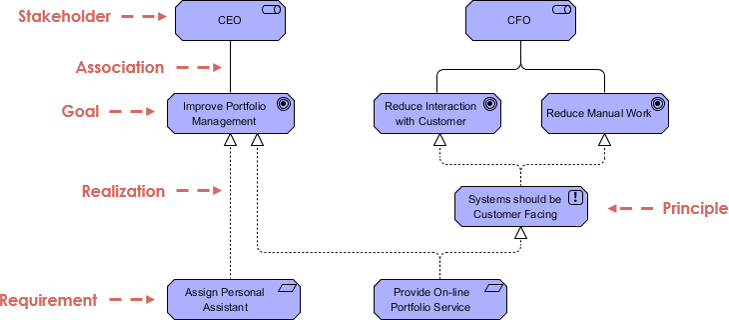
Motivation Elements in ArchiMate 3.2:
In ArchiMate 3.2, motivation elements take center stage, allowing architects to capture the reasons and driving factors behind the design or transformation of an Enterprise Architecture. Let’s delve into the key motivation elements outlined in the Metamodel:
- Stakeholder:
- At the core of any EA endeavor are the stakeholders. These are the individuals, groups, or entities with vested interests in the enterprise. ArchiMate recognizes the importance of understanding and aligning with stakeholder concerns, making it a foundational element in the motivation layer.

- At the core of any EA endeavor are the stakeholders. These are the individuals, groups, or entities with vested interests in the enterprise. ArchiMate recognizes the importance of understanding and aligning with stakeholder concerns, making it a foundational element in the motivation layer.
- Driver:
- What motivates change within an enterprise? Drivers are the forces, internal or external, that influence the need for architectural modifications. Whether it’s market trends, regulatory changes, or internal organizational goals, drivers guide architects in making informed decisions.

- What motivates change within an enterprise? Drivers are the forces, internal or external, that influence the need for architectural modifications. Whether it’s market trends, regulatory changes, or internal organizational goals, drivers guide architects in making informed decisions.
- Assessment:
- To validate the impact of drivers, assessments come into play. These elements provide a structured way to evaluate and analyze the current state of the enterprise and its alignment with the identified drivers. Assessments are crucial for informed decision-making.

- To validate the impact of drivers, assessments come into play. These elements provide a structured way to evaluate and analyze the current state of the enterprise and its alignment with the identified drivers. Assessments are crucial for informed decision-making.
- Goal:
- Goals represent the desired future state that an enterprise aims to achieve. These are the tangible outcomes derived from aligning with drivers and satisfying stakeholder concerns. Goals act as beacons, guiding the architectural journey towards a predefined destination.

- Goals represent the desired future state that an enterprise aims to achieve. These are the tangible outcomes derived from aligning with drivers and satisfying stakeholder concerns. Goals act as beacons, guiding the architectural journey towards a predefined destination.
- Outcome:
- As the enterprise progresses, outcomes are the real-world results derived from achieving goals. These tangible results can include improved efficiency, increased market share, or enhanced customer satisfaction. Outcomes serve as indicators of success and are integral to the feedback loop in EA.

- As the enterprise progresses, outcomes are the real-world results derived from achieving goals. These tangible results can include improved efficiency, increased market share, or enhanced customer satisfaction. Outcomes serve as indicators of success and are integral to the feedback loop in EA.
- Principle:
- Principles are fundamental guidelines and rules that govern decision-making in EA. They act as a bridge between motivations and the practical implementation of architectural changes. Principles provide a framework for consistency and coherence in the decision-making process.

- Principles are fundamental guidelines and rules that govern decision-making in EA. They act as a bridge between motivations and the practical implementation of architectural changes. Principles provide a framework for consistency and coherence in the decision-making process.
| Motivation Elements | ||
|---|---|---|
|
Definition | Notation |
| Stakeholder | Represents the role of an individual, team, or organization (or classes thereof) that represents their interests in the effects of the architecture. | 
|
| Driver | Represents an external or internal condition that motivates an organization to define its goals and implement the changes necessary to achieve them. | 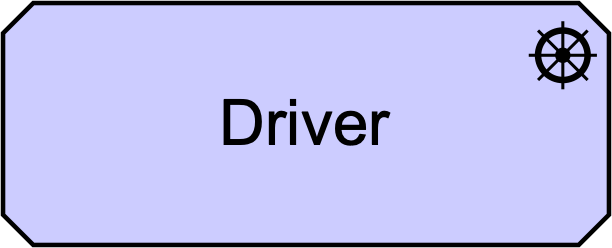
|
| Assessment | Represents the result of an analysis of the state of affairs of the enterprise with respect to some driver. | 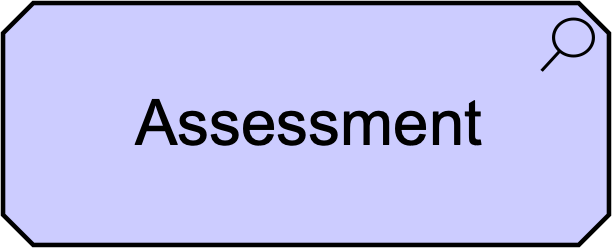
|
| Goal | Represents a high-level statement of intent, direction, or desired end state for an organization and its stakeholders. | 
|
| Outcome | Represents an end result, effect, or consequence of a certain state of affairs. | 
|
| Principle | Represents a statement of intent defining a general property that applies to any system in a certain context in the architecture. | 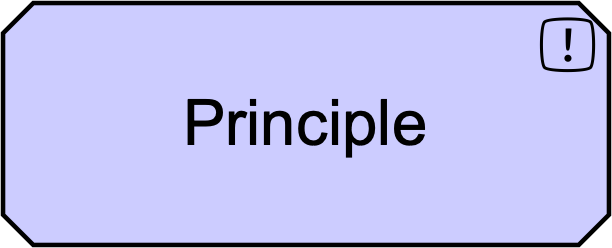
|
| Requirement | Represents a statement of need defining a property that applies to a specific system as described by the architecture. | 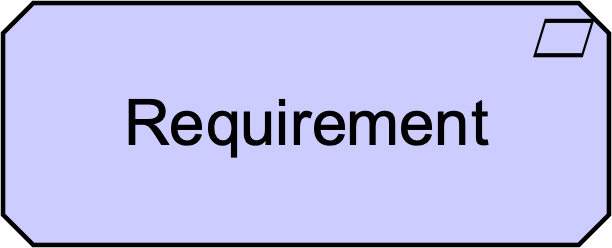
|
| Constraint | Represents a limitation on aspects of the architecture, its implementation process, or its realization. | 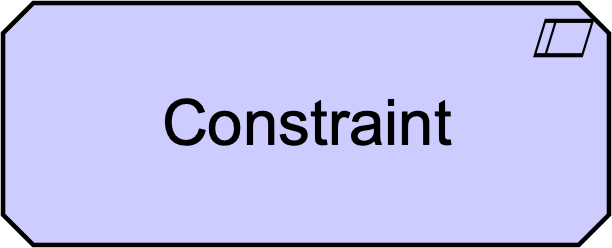
|
| Meaning | Represents the knowledge or expertise present in, or the interpretation given to, a concept in a particular context. | 
|
| Value | Represents the relative worth, utility, or importance of a concept. | 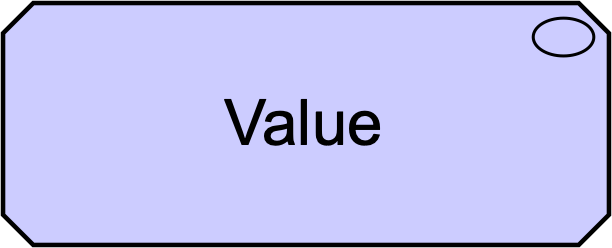
|
Relationships and Metamodel:
The Motivation Elements Metamodel (Figure 34) in ArchiMate 3.2 showcases the intricate relationships between these motivation elements. While Figure 34 provides a high-level overview, it’s essential to note that each element can have composition, aggregation, and specialization relationships with elements of the same type.
Moreover, indirect relationships can be derived, adding depth to the modeling capabilities. Architects can explore the full specification of permitted relationships in Appendix B of the ArchiMate documentation, allowing for a nuanced and comprehensive representation of motivation within the EA context.
Conclusion:
In the dynamic landscape of enterprise architecture, understanding and modeling motivations are paramount. ArchiMate 3.2’s Motivation Elements provide a robust framework for architects to capture, analyze, and align with the driving forces that shape architectural decisions. By leveraging stakeholder concerns, drivers, assessments, goals, outcomes, and principles, organizations can navigate the complexities of EA with clarity and purpose, ensuring that every architectural decision contributes meaningfully to the overall success of the enterprise.
Resources
- What is ArchiMate?
- Visual Paradigm Supporting Evidence | Certification & Accreditation
- An Overview of ArchiMate – the Enterprise Architecture Modeling Language – Cybermedian
- ArchiMate – Wikipedia
- ArchiMate 3 – ArchiMate Resources for FREE
- The ArchiMate® Enterprise Architecture Modeling Language | www.opengroup.org
- Free Online ArchiMate Tool + Examples – Cybermedian
- ArchiMate 3 Update [Quick Walkthrough] – Visual Paradigm
- Introduction: ArchiMate® 3.2 Specification









